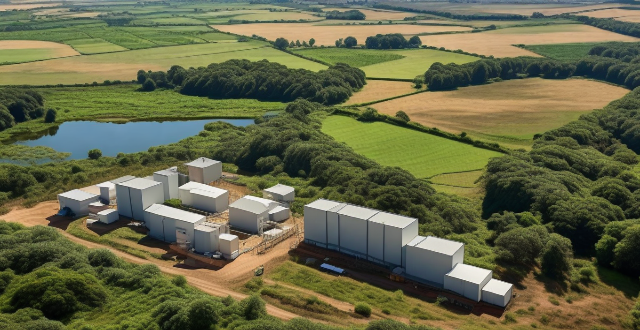Climate variability significantly impacts agriculture and food security by affecting crop yields, livestock production, and the availability and accessibility of food. Direct impacts include changes in temperature, precipitation, extreme weather events, and CO₂ levels, while indirect impacts involve pest and disease outbreaks, water resource availability, soil quality, ecosystem services, market prices and trade, food accessibility and nutrition, and farmer livelihoods. Mitigation and adaptation strategies such as crop diversification, improved water management, breeding resilient crops, sustainable soil management, early warning systems, insurance and safety nets, policy support, and international cooperation are essential for building a climate-resilient food system.

Impacts of Climate Variability on Agriculture and Food Security
Climate variability, which refers to fluctuations in temperature, precipitation, winds, and other weather patterns over time, has profound impacts on agriculture and food security. These impacts can be both direct and indirect, affecting crop yields, livestock production, and the overall availability and accessibility of food. Here's a detailed exploration of these effects:
Direct Impacts
1. Changes in Temperature:
- Extreme temperatures can lead to heat stress or frost damage in crops.
- Warmer temperatures may accelerate plant growth cycles but can also lead to premature ripening and reduced yield.
2. Variations in Precipitation:
- Droughts decrease soil moisture, limiting water availability for crops and reducing pasture quality for livestock.
- Flooding can destroy crops, wash away topsoil, and contaminate water sources used for irrigation.
3. Extreme Weather Events:
- Hurricanes, tornadoes, and hailstorms can physically damage crops and farming infrastructure.
- Changes in wind patterns can affect pollination and the spread of pests and diseases.
4. Changes in CO₂ Levels:
- While increased CO₂ can enhance photosynthesis and potentially increase crop yields, it also poses challenges such as weed proliferation and changes in nutrient content of some crops.
Indirect Impacts
1. Pest and Disease Outbreaks:
- Altered climate conditions can favor certain pests and diseases, leading to increased incidence and severity of outbreaks.
2. Water Resource Availability:
- Climate variability can alter the timing and quantity of water flow in rivers and aquifers, affecting irrigation capabilities.
3. Soil Quality:
- Changes in precipitation patterns can lead to soil erosion or salinization, reducing soil fertility.
4. Ecosystem Services:
- Disruption of natural ecosystems due to climate change can affect pollinator populations and nutrient cycling processes that support agriculture.
5. Market Prices and Trade:
- Climate variability can cause fluctuations in global food prices and disrupt international trade patterns, affecting food imports and exports.
6. Food Accessibility and Nutrition:
- Extreme weather events can damage transportation networks and storage facilities, making it difficult to distribute food to those who need it most.
7. Farmer Livelihoods:
- Smallholder farmers are particularly vulnerable to climate variability due to their dependence on rain-fed agriculture and limited resources to adapt.
Mitigation and Adaptation Strategies
To address the challenges posed by climate variability, several strategies can be implemented:
1. Crop Diversification: Planting a variety of crops that have different water and temperature requirements can help buffer against losses from extreme weather.
2. Improved Water Management: Investing in efficient irrigation systems and water storage solutions can reduce the impact of droughts and floods.
3. Breeding Resilient Crops: Developing crops that can withstand extreme temperatures, pests, and diseases is crucial for future food security.
4. Sustainable Soil Management: Practices like conservation tillage and organic farming can improve soil health and resilience.
5. Early Warning Systems: Implementing advanced monitoring and forecasting tools can give farmers time to prepare for adverse weather conditions.
6. Insurance and Safety Nets: Providing financial protection to farmers through insurance schemes and social safety nets can help them recover from climate-related losses.
7. Policy Support: Government policies that promote research, extension services, and farmer education are vital for building climate resilience in agriculture.
8. International Cooperation: Collaborative efforts between nations can facilitate technology transfer, knowledge sharing, and coordinated responses to global food crises.
By understanding the multifaceted ways in which climate variability affects agriculture and food security, stakeholders can better plan and implement strategies to ensure a sustainable and resilient food system for all.